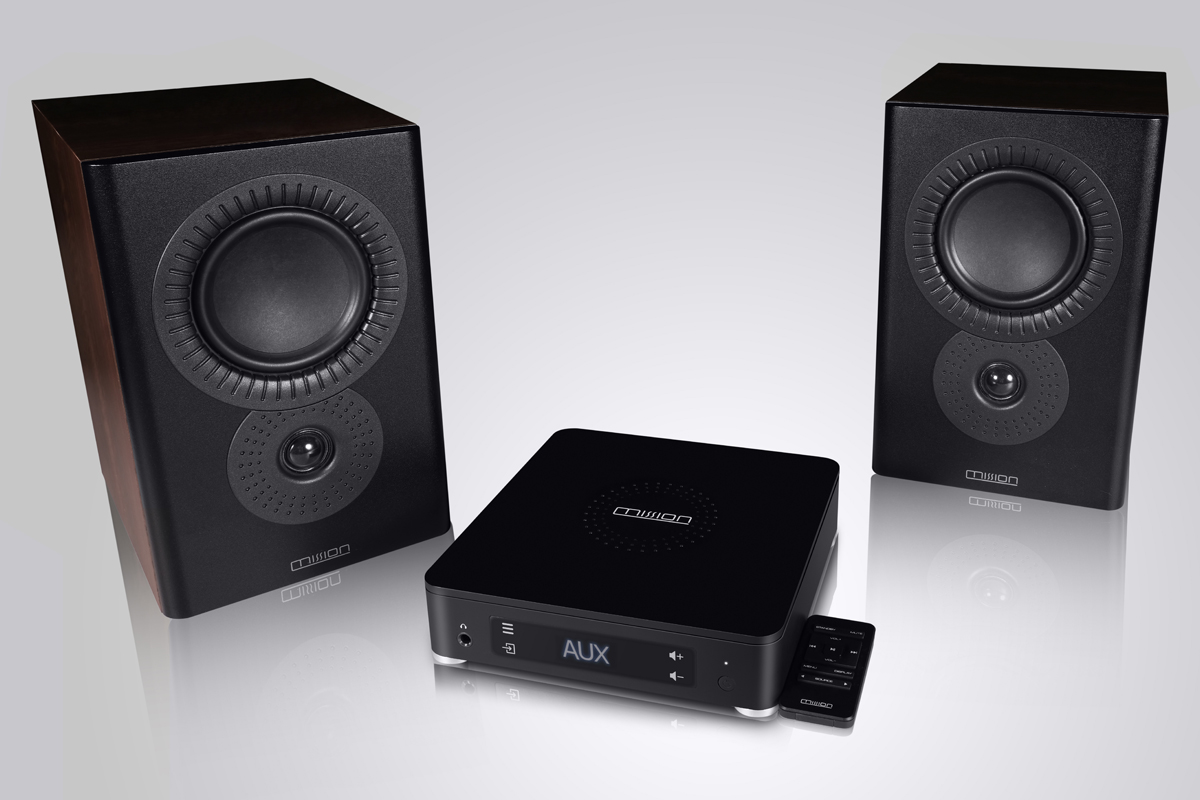The British hi-fi brand Mission is best known for its passive loudspeakers; but, late last year, the company introduced a lifestyle music system that combines a wireless hub with a pair of active bookshelf loudspeakers. Priced at $1699.99 (all prices in USD), the LX Connect was designed and engineered in the UK, with acoustic engineering by Mission and electronic design by its sister company Audiolab. Both brands are part of the International Audio Group (IAG), a Chinese company that also owns Castle Acoustics, Leak, Luxman, Quad, and Wharfedale.
With the LX Connect system, you can connect source components like PCs and Macs, music streamers, disc players, game consoles, and HDTVs to the LX Connect Hub, which can be hidden out of the way. You can also stream music to the Hub from any Bluetooth-capable device. The Hub transmits uncompressed digital audio to the two speakers. The only wires needed for the speakers are power cords.
The speakers
The LX Connect is based on Mission’s LX-2 MKII passive loudspeaker, a two-way, rear-ported design. Like its passive cousin, the LX Connect speaker employs a 5″ bass-midrange driver and 1″ microfiber-dome tweeter. But it’s an active design, with a DSP-based second-order Linkwitz-Riley crossover that comes before the amplifiers in the signal path. Crossover frequency is 3.2kHz, and the specified frequency response is 58Hz–20kHz, ±3dB.
The bass-midrange driver is powered by a class-D amplifier rated at 45W RMS, and the tweeter by a class-D amp rated at 15W RMS. The amplifiers are in-house IAG designs, with both based on Texas Instruments’ PurePath HD class-D technology, Jamie O’Callaghan, IAG’s global sales and marketing director, told me in an email exchange. “Unlike traditional class-D amplifiers, the distortion curve only increases once the output levels move into clipping,” O’Callaghan said.
As on the passive LX-2 MKII, the bass-midrange driver is placed above the tweeter; this arrangement improves time alignment between the two drivers, Mission says.
The woofer employs a seamless, curvilinear composite-fiber cone with no dustcap. Instead, the diaphragm is driven by a secondary sub-cone connected to the voice coil. This improves efficiency and gives the amplifier greater control over cone motion, according to Mission. The company also claims that the dual-layer composite cone has “excellent self-damping” and maintains consistent performance regardless of humidity.
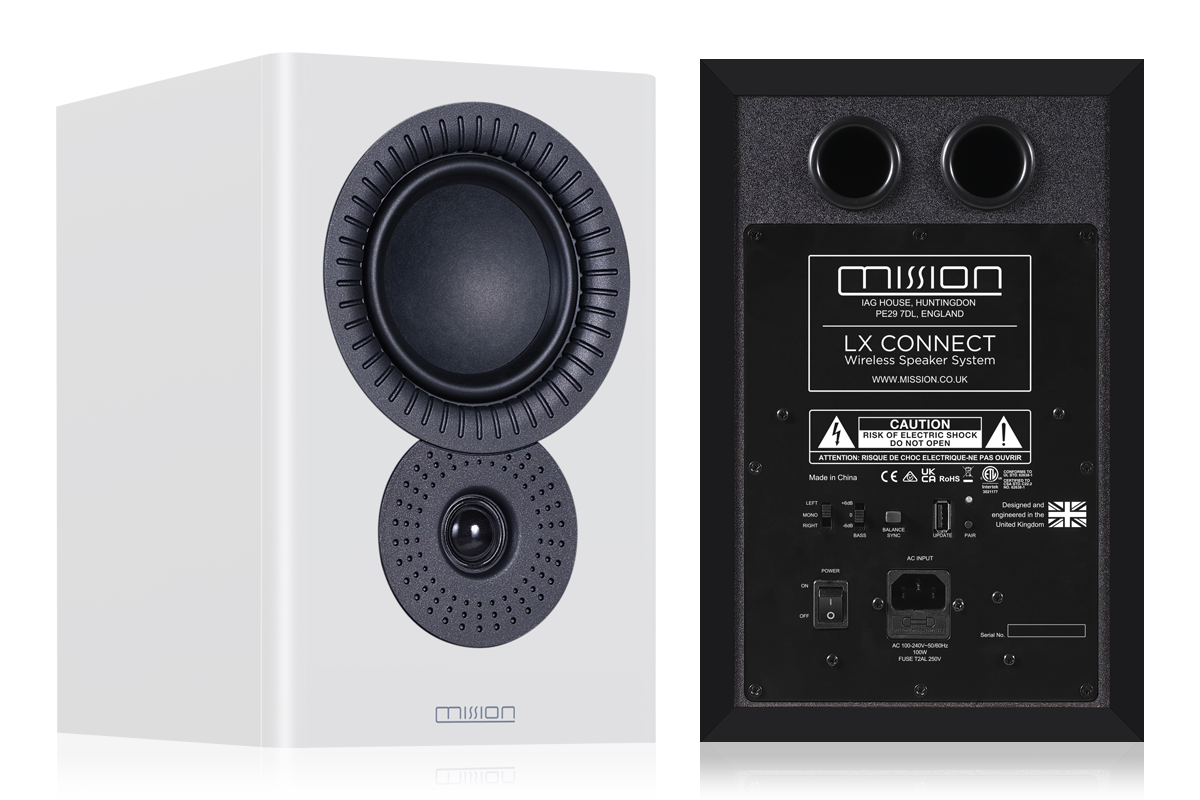
Each LX Connect speaker measures 7.9″W × 12″H × 9.8″D and weighs 14.4 pounds. The speakers are available in three finishes: Walnut Pearl, Lux White, and Lux Black. The front baffle protrudes about a half-inch from the vinyl-wrapped enclosure, with its side edges radiused toward the back. The baffle is color-matched to the cabinet; my review samples were in the Walnut Pearl finish, with a black baffle. There is a serrated plastic ring around the woofer, and a dimpled ring around the tweeter; these structures dissipate unwanted reflections, Mission says. Below the tweeter is a painted Mission logo, in dark gray. The speakers are supplied with magnetically attached black grilles with a metal Mission badge at the bottom.
There are no inputs of any kind on the speakers. Instead, they receive audio wirelessly from the LX Connect Hub. At the bottom of the rear panel on each speaker is an on/off rocker switch, and to its right a two-prong IEC power inlet.
Above the on/off switch is a three-position mode switch for setting the speaker to play left- or right-channel audio when the speakers are used as a stereo pair, or summed mono if they’re used for multiroom playback or placed in locations in the same room that don’t lend themselves to stereo listening.
To the right of the mode switch is a three-position bass-selector switch with +6dB, 0 (flat), and -6dB settings. In our email exchange, O’Callaghan passed on some advice from Peter Comeau, IAG’s director of acoustic design:
The speakers will always offer best performance when placed on appropriate stands. The 0dB setting would be recommended when the speakers are closer to the wall. The +6dB setting would be recommended if the speaker can be accommodated further from the wall, and the in-room low-end performance requires or can handle the additional bass boost. If the speakers are shelf- or surface-mounted, the 0dB and even -6dB settings are recommended, as the in-room low-end performance will likely be amplified by such placement.
Having those settings on both speakers makes it easier to compensate for different boundary conditions for the left and right channels. As you will read below, those adjustments proved quite useful in my listening tests.
To the right of the bass switch is a Balance Sync button, which is used for activating and deactivating the left/right balance setting that has been configured on the Hub.
The Hub
All inputs for the LX Connect system are on the LX Connect Hub, which transmits 16-bit/48kHz PCM audio to the two speakers using Microchip Technology’s KleerNet protocol. Mission says the Hub and speakers can communicate reliably at distances up to 20m (about 65′). The Hub also contains a headphone amplifier.
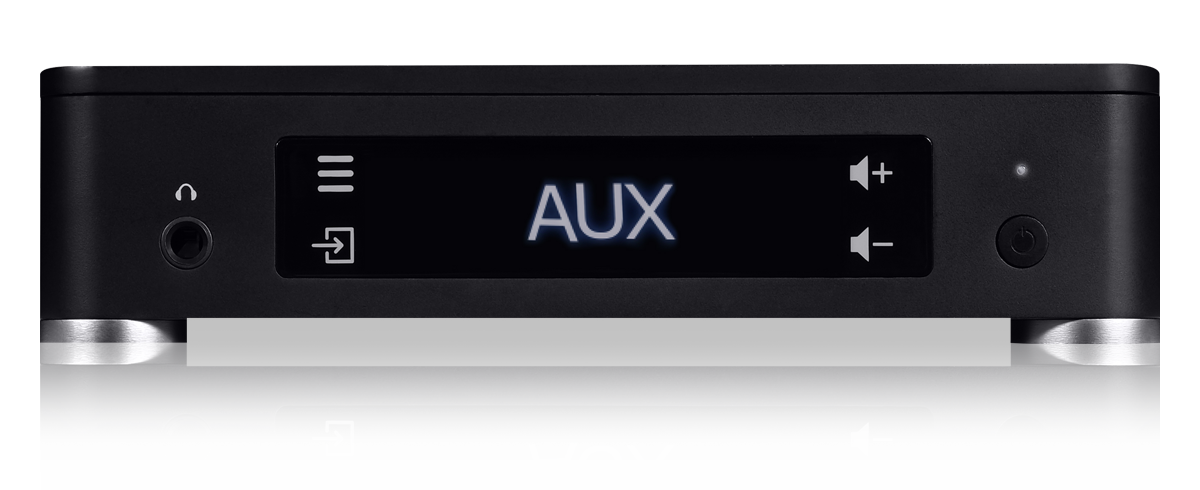
The Hub measures 8.9″W × 2.2″H × 9.1″D, and weighs 3.9 pounds. It only comes in a black finish. On the left side of the front panel is a 1/4″ headphone jack, and on the right, an on/off switch for waking the Hub up from standby mode. In the center is a 5.2″W × 1.1″H OLED display that shows the name of the selected input, menu options, and other information, with touch controls on either side. On the top left is a three-line menu control, and below it a control for cycling through sources. On the right side are up and down volume controls.
The Hub comes with a small metal remote control with standby, on/off, and mute buttons at the top, and a central pad with volume, track navigation, and play/pause functions. Below this is a button for entering the menu and turning the display on or off; and below that a button for cycling through sources.
On the back of the Hub are a pair of RCA preamp output jacks for output to a subwoofer or external amplifier; a pair of RCA line-level input jacks for connecting an analog source component; coaxial and optical S/PDIF inputs for digital components like disc players and game consoles; an HDMI ARC port for connecting a TV; a USB Type-B port for connecting a computer; a USB Type-A port for performing firmware updates; and a 12V DC input for the wall-wart power supply. The Hub has a Bluetooth receiver that supports aptX HD, aptX Low Latency, AAC, and SBC codecs, but it does not have a built-in streamer or Wi-Fi connectivity.
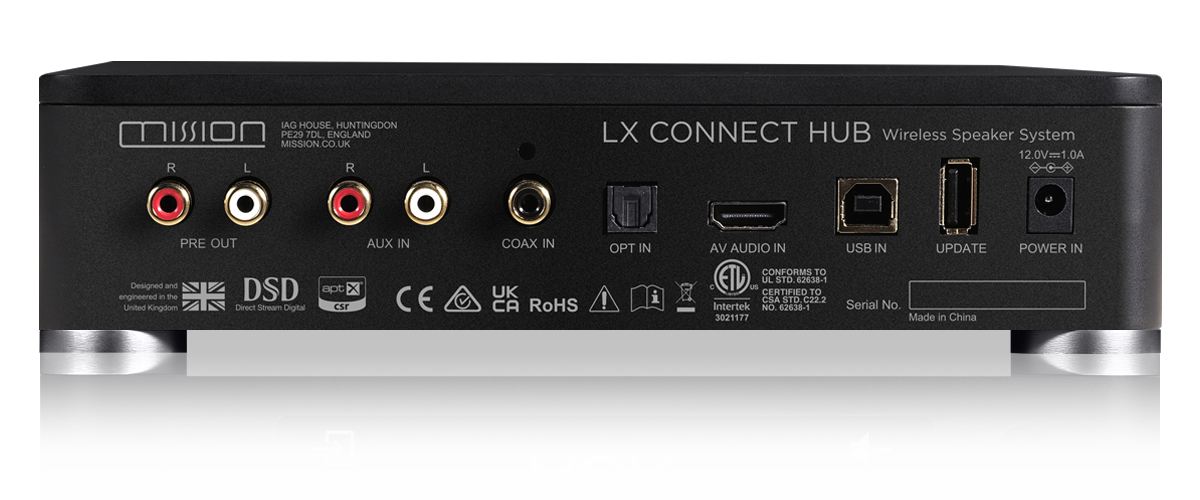
Tuned by Audiolab, the Hub’s digital section is based on ESS Technology’s Sabre32 ES9018K2M DAC chip. Maximum resolution of the two S/PDIF inputs is 24/192 PCM. Mission says the USB input accepts PCM streams to 32/384, and DSD to DSD256 (11.2MHz). For playback through the LX Connect speakers, all streams are converted to 16/48 PCM. However, music will be played at native resolution through the preamp outs, and when listening through the Hub’s headphone amplifier.
In the Hub’s menus, users can switch between Music and Movie modes, select default inputs and volume settings, set the speaker balance, adjust display brightness, and choose different digital filters and DSD bandwidth settings. The last function only operates on audio sent through the preamp outputs to an external component.
Setup
To pair the Hub and speakers, activate the menu on the Hub using the remote or the touchscreen and select Enter Pairing. Then press the Pair button on the back of one of the speakers. Repeat the process for the second speaker. Easy-peasy. During my testing, I did not experience any interruptions in communications between the Hub and speakers.
During my review, I used my HP Spectre x360 notebook PC and an iFi Audio Zen Stream streamer ($399) as sources. I streamed music to the Zen Stream from the Apple Mac Mini in my home office, which runs Roon Core 1.8 music-management software; the LX Connect has received Roon Tested certification. I also played music on the HP Notebook using Audirvana 3.5.51.
Both sources worked fine, except for one thing. Neither would play DSD files, even though Mission claims DSD playback is supported over the USB input. In both cases, the display on the Hub confirmed that it was receiving a DSD datastream. But there was no sound when streaming from Roon to the Zen, and just a very high-frequency squeal when streaming from Audirvana on the HP notebook.
As it turns out, the LX Connect will only play DSD files through the headphone and preamp outputs, and only if wireless transmission between the Hub and speakers has been turned off in the Hub’s menus. This is a weird limitation; and it’s not mentioned in the Quick Start guide or user manual, or on Mission’s website. Mission says it will update documentation and marketing materials for the LX Connect to make this limitation clear.
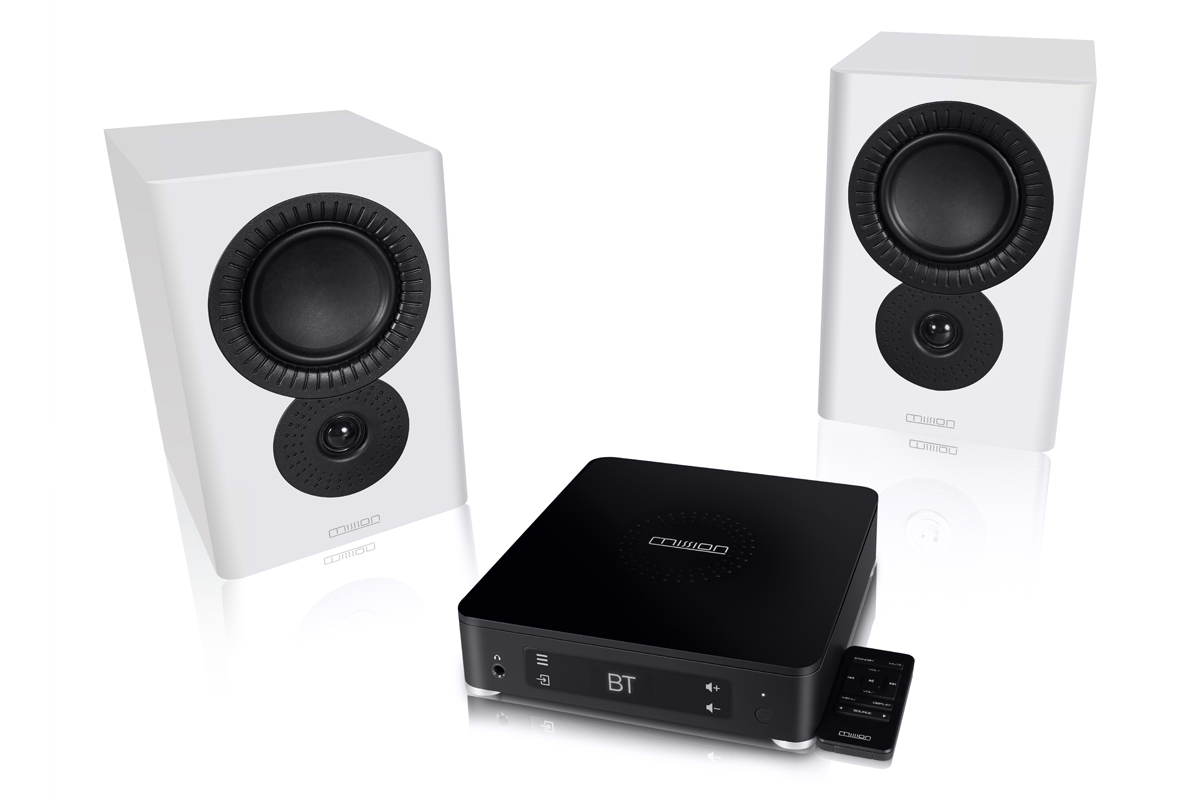
I also tried connecting the Hub’s HDMI ARC port, labeled AV Audio In, to the 50″ Vizio D50-D1 HDTV in my basement family room, and to the One Connect breakout box for the 55″ Samsung Frame TV in my main-floor living room.
HDMI ARC worked fine with the Vizio. But the Samsung Frame TV refused to recognize the LX Connect as an HDMI ARC device. Even stranger, the Hub and speakers would not communicate when the Hub was connected to the One Connect’s HDMI ARC port. There was no sound through the speakers from any source connected to the Hub. To restore communication between the Hub and speakers, I had to disconnect the HDMI cable from the Hub, then disconnect and reconnect the power. Weird!
I asked Mission about this; the company told me it had verified HDMI ARC compatibility with Samsung’s TVs, but would look into compatibility with my specific model.
Listening I
For my first round of listening, I placed the LX Connect speakers on either side of a credenza in our basement family room. Sitting on IsoAcoustics ISO-155 desktop speaker stands, the speakers were 4′ apart, with their back panels 12″ from the wall behind them and their front baffles 5′ from my listening position. As IAG’s Comeau noted, shelf mounting isn’t ideal acoustically. Even so, I think a common use scenario for a system like this would be for nearfield listening in a small secondary room.
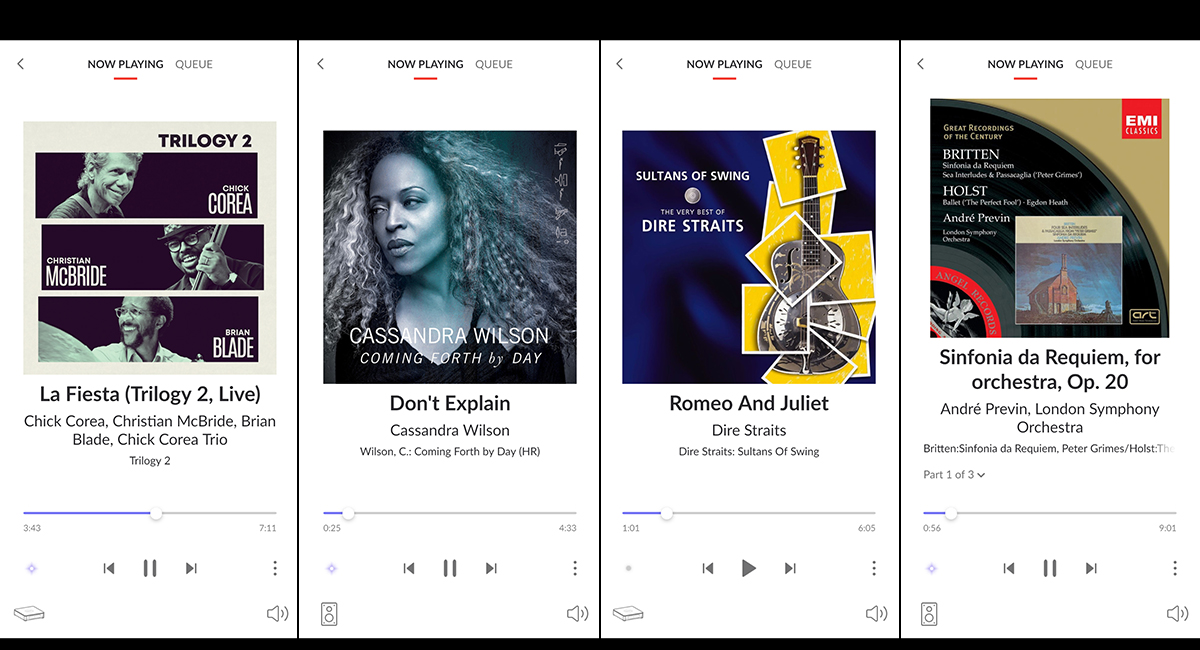
I often like to start off my listening with some well-recorded jazz from a piano trio. This is partly because I love the genre, but I also find the combination of piano, double bass, and drums reveals many aspects of system performance: timbral neutrality, tonal consistency, bass and treble extension, and dynamics.
So when I sat down to listen, I started with Trilogy 2, a live-concert compilation by the Chick Corea Trio (24/192 FLAC, Concord Jazz/Qobuz). I cued up “La Fiesta” in Roon and played it through the Zen Stream, which was connected to the Hub’s USB port.
Through the LX Connect system, this track sounded lively and exciting. Dynamics were superb—the active Missions could go from pianissimo to fortissimo on a dime. Imaging was also excellent, with Corea’s piano firmly located on the front right of the soundstage, Christian McBride’s double bass on the front left, and Brian Blade’s drum kit arrayed across the rear.
The LX Connect speakers delineated Corea’s piano runs beautifully. Piano tone was very good, with satisfying heft down in the lower octaves, and lovely ringing clarity in the middle and upper octaves. But on loud passages played at high (but not ear-splitting) levels, a touch of stridency crept in.
With the speakers’ bass switches in the flat position, McBride’s double bass sounded full and robust, but just a tad thuddy. To a large degree, that’s a reflection of the setup in my family room, with the system placed on the long wall, and the listening position against the opposite wall, a short distance away. Selecting the -6dB setting tightened up the bass, but also made the tonal balance a little lean; on this track I preferred the flat position. I mention this not to criticize the LX Connect, but to praise it. I think this system will be used in many less-than-ideal setups, and the bass EQ feature allows listeners to compensate.
Where the LX Connect shone was its rendition of Blade’s drumming. His snare rolls were beautifully articulated, and his rim shots were fast—almost explosive—yet not overbearing. Cymbals had convincing metallic sheen, but were just a tad splashy. The LX speakers differentiated beautifully between the sounds of the various metallic surfaces. Beats on the floor tom had impressive palpability.
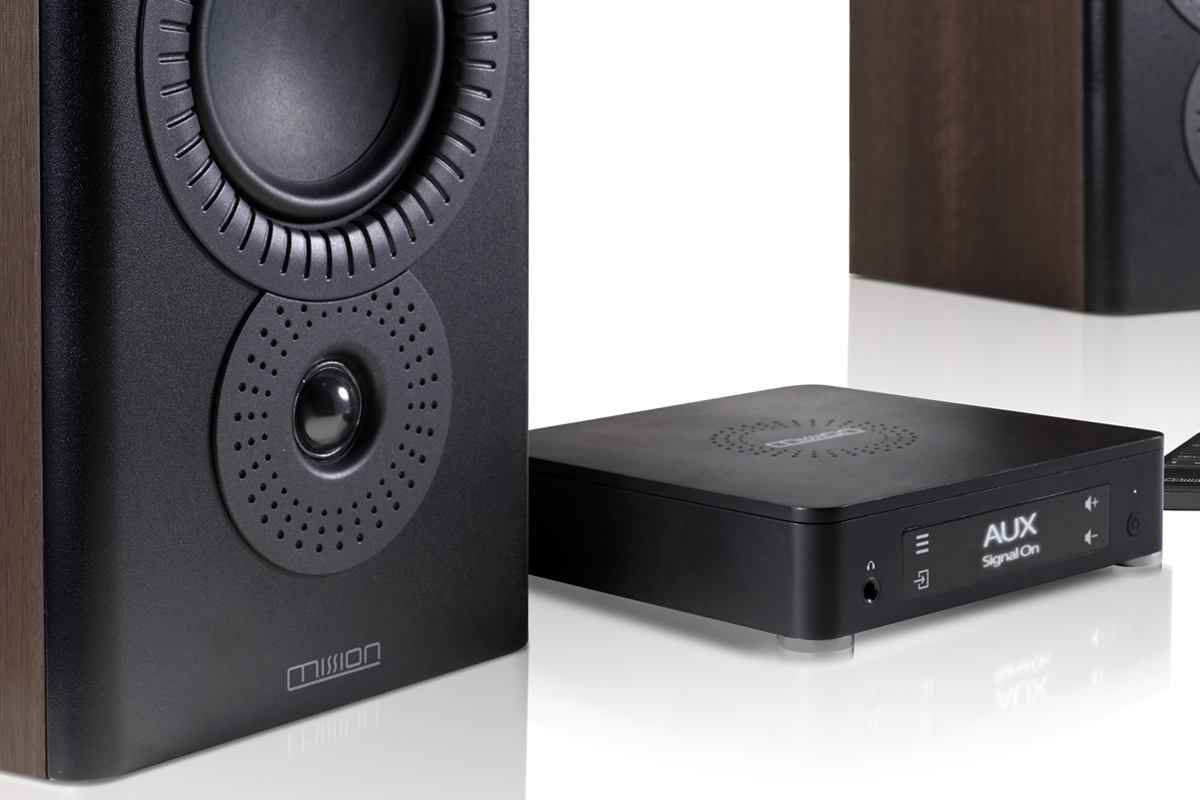
I also admired the LX Connect’s rendering of Thomas Wydler’s floor tom beating out a fierce jungle rhythm in “Don’t Explain,” from Cassandra Wilson’s Billie Holiday tribute album Coming Forth By Day (24/96 ALAC, Sony Music/HDtracks): those drumbeats were big, bold, and menacing. With the speakers’ bass switches in the flat, 0dB position, the floor tom sounded a bit bloated; selecting the -6dB setting solved that problem. Now I could hear the mallets striking the drumhead, and the resonance of the drum body. This setting also improved the definition of Martyn P. Casey’s electric bass guitar, and made it easier to differentiate between the floor-tom beats and the deep notes on the bass guitar. On this track, I preferred the -6dB setting.
Imaging was pinpoint, with Wilson’s voice front and center, Jon Cowherd’s piano behind her, Robby Marshall’s tenor sax off to the left, Casey’s bass guitar to the right, and the drums and percussion along the rear. Dynamics were impressive too, with Cowherd’s honky-tonk phrases and Marshall’s wailing sax jumping out of the soundstage into my room. Timbres of both instruments were very convincing.
Through most of the song, Wilson’s dark, smoky alto voice sounded very natural through the Missions, highlighting the sadness and vulnerability in the song.
The dense, reverb-laden production by Nick Launay, producer for Nick Cave and the Bad Seeds, challenged the LX Connect’s dynamic capabilities. In the quieter opening and middle sections, the Mission speakers created a spooky, threatening atmosphere that I’m sure was exactly what Launay intended. It was almost impossible not to sway back and forth—the effect was hypnotic. But during the big wall-of-sound passages near the end of the track, the sound became a little thick and congested, with some hardness; in those passages, Wilson’s voice became a bit hollow, with a slightly papery edge up top.
Listening II
For my second round of listening, I moved the LX Connect system to my main-floor living room and placed the speakers on 28″ Monoprice Monolith speaker stands on either side of the electric fireplace. The speakers were 7′ apart, 16″ from the wall behind them, and 7′ from the sweet spot on the end cushion of our sectional sofa on the opposite wall. This is more of an ideal use case, according to Comeau. I set the speakers’ bass switches in the 0dB position.
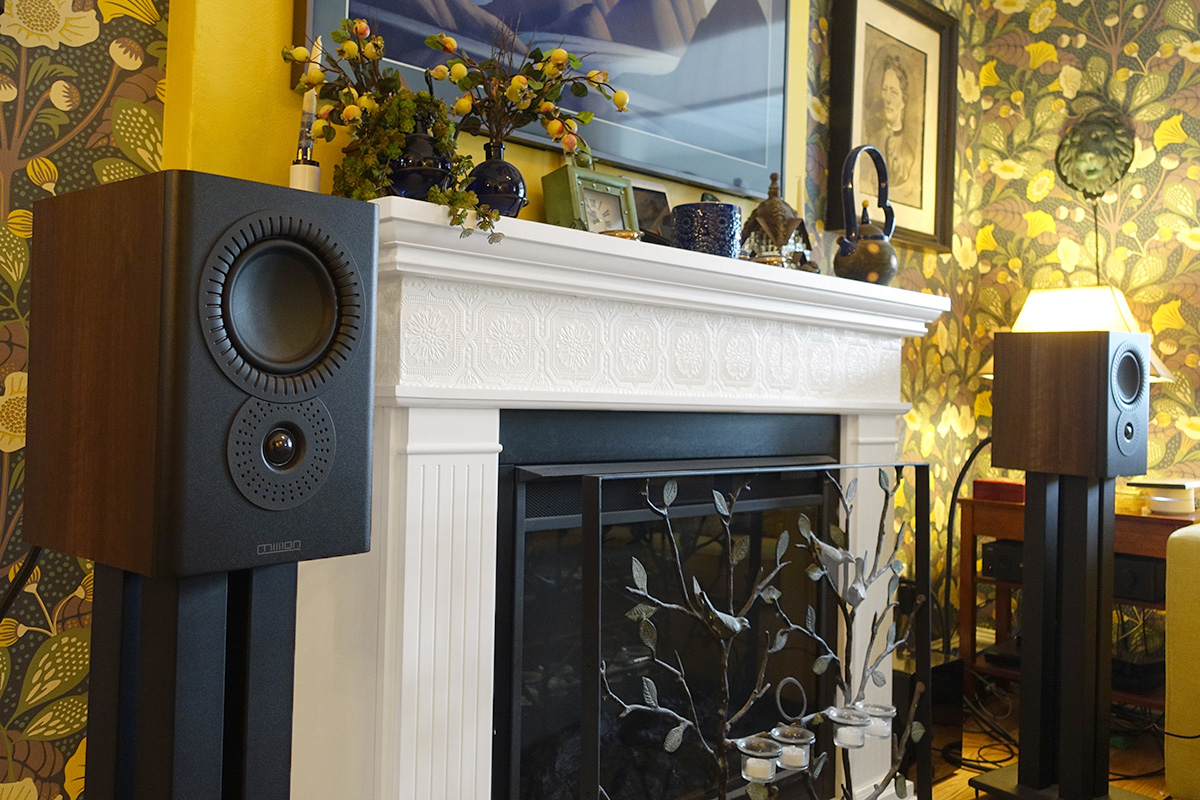
I started with “Romeo and Juliet,” from Sultans of Swing: The Very Best of Dire Straits (16/44.1 ALAC, Warner Bros. Records). The track opens with a short solo played by Mark Knopfler on resonator guitar. Locked in space on the right side of the soundstage, his instrument sounded glorious—combining a big metallic twang with rich woody resonance.
Twelve seconds in, Pick Withers on drums and John Illsley on electric bass guitar enter. The quiet taps on the hi-hat and wood block sounded ideal—fast and precise, with no hint of splashiness or harshness. Despite sounding a little one-noteish, Illsley’s bass guitar on the left side of the soundstage gave the song a warm foundation. Similarly, Withers’s kick drum was a bit thuddy, but still drove the song forward very effectively.
Changing the bass switches to +6dB made the sound fuller and warmer without adding excess boominess. While I found the balance more natural with the switches in the 0dB position, I’m sure many listeners would enjoy the extra warmth that the +6dB setting delivers—and I would not question this preference for a moment.
What really grabbed me was Knopfler’s drawling vocals, which the Mission speakers produced without any distracting coloration. Consonants and sibilants were clear, but never spitty. I loved the way these speakers revealed little touches, like the way Knopfler stretches out some vowels, without highlighting them excessively.
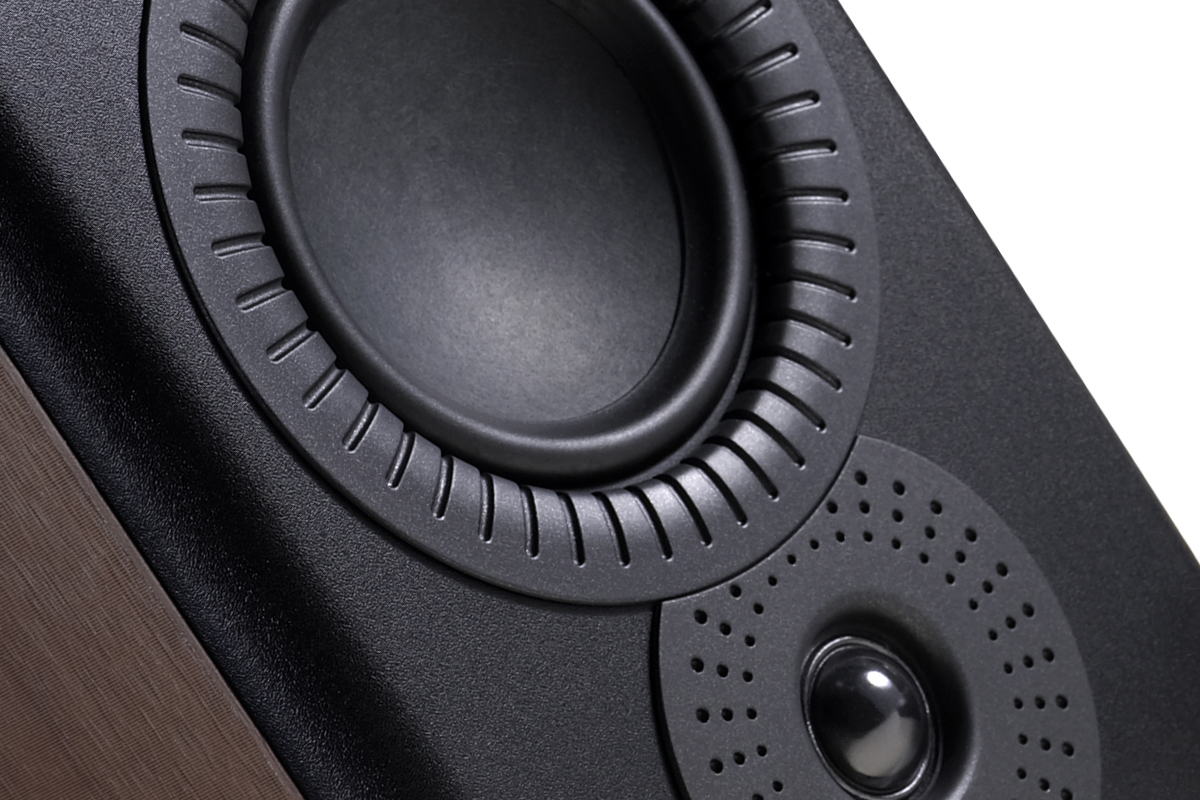
As I’d expect from a pair of standmounted minimonitors, the LX Connect speakers created a wide, deep, and high soundstage, with very precise placement of aural images. However, the sound became a little thick and congested, with a touch of hardness, during louder passages like the choruses.
To hear how these small standmounts would cope with dense, demanding orchestral music, I cued up a classic recording of Benjamin Britten’s Sinfonia da Requiem by the London Symphony Orchestra, conducted by André Previn (16/44.1 FLAC, Warner Classics/Qobuz). Orchestral timbres were uniformly ideal, and imaging was superb, with excellent front-to-back layering. Except in the loudest sections, when they became a little hard and congested, the orchestral textures were wonderfully transparent, making it easy to hear the interplay of different groups of instruments. Dynamics too were fabulous—the big timpani and bass-drum strokes exploded out of the speakers into my living room.
To check out the Movie Mode option, I connected the optical output of the One Connect breakout box for my Samsung Frame TV to the Hub’s optical input, and then looked for something to watch on the TV’s Netflix app. Figuring that explosions and space battles might be a bit too taxing for a pair of small active standmount speakers sans subwoofer, I stayed away from effects-heavy action and sci-fi flicks, and instead looked for something with lots of atmosphere and dialog, along with some dramatic effects. The Coen Brothers’ 2010 remake of True Grit seemed about perfect.

Up to this point, I’d been using the LX Connect just for music, so I started watching in Music Mode. Dialog of all the characters—Jeff Bridges’s nasal baritone drawl, Hailee Steinfeld’s purposeful, plain-spoken teenage voice—was spot-on: completely natural and intelligible. Carter Burwell’s musical score, which spanned the entire soundstage, sounded wonderful: lush and full, with dynamic and impactful percussion.
Movie Mode made a subtle but worthwhile improvement. The soundstage was wider, now extending a little beyond the speakers, and effects like the whistling wind and horse-hoof clops were delineated more clearly. Dialog was a tad crisper and more intelligible, but no less natural than it was in Music Mode. I’ve encountered movie modes on some components that are overdone—they make sound effects more impressive and dialog crisper, but they also make the midrange harsher and the bass boomier. That was not the case with the LX Connect. Its Movie Mode is very well judged, and I would not hesitate to use it for movies—or for video games, for that matter, if I was a gamer.
Comparison
I compared the LX Connect system with Q Acoustics’ Q Active 200 active loudspeakers and wireless hub ($1499). The Q Active 200 is an unusual design, with two front-mounted 2.25″ balanced-mode radiator drivers, each powered by a Texas Instruments class-D amplifier rated at 20W continuous, and a rear-firing 4.5″ woofer powered by a Texas Instruments class-D amp rated at 55W continuous. The Q Acoustics Hub has a built-in streamer and phono preamp, which the LX Connect lacks, but the Mission’s Hub has a built-in headphone amp.
Placed on the credenza in my basement family room, the Q Actives let me hear a little more of Chick Corea’s touch on the piano on “La Fiesta.” While microdynamics were better on the Qs, macrodynamics were better on the Missions. Brian Blade’s rim shots were more explosive through the LX Connect, more compressed through the Q Active 200s. Highs were a little truncated on the Qs compared to the Mission speakers, so that cymbals had less metallic sheen; but they were also less splashy. With the room-boundary switch on the back of the Q speakers in the Wall position, Christian McBride’s double bass sounded a little thuddier and more one-noteish through the Qs, compared to the Mission speakers in the flat position. Piano tone was fuller on the Qs, with no sign of the stridency I heard on the Missions. Overall, I found the Mission speakers more exciting and involving on this track, and the Qs smoother and more inviting.
Like the LX Connect, the Q Active 200 system nailed Mark Knopfler’s voice when playing “Romeo and Juliet” in my living room. Compared to the Missions, highs were slightly truncated on the Q Actives. Through the Qs, Knopfler’s resonator guitar had less twang, and also less woody resonance. Pick Withers’s hi-hat had less shimmer. At the opposite end of the audioband, John Illsley’s electric bass guitar had better texture through the Qs. In the loud choruses, the Q Actives also became a little thick and congested, but without the hard edge I noticed on the Missions. The Qs created an even higher soundstage than the Missions, but imaging specificity was about the same with both sets of speakers. Overall, I preferred the extra excitement that the Mission speakers delivered on this track.
Headphone listening
The LX Connect Hub has a very capable headphone amplifier. It was able to drive my HiFiMan Edition X V2 planar-magnetic cans ($1299) to very satisfying levels with the volume less than halfway up. For planars, these are easy ’phones to drive: sensitivity is very high, at 103dB/1mW, and impedance is low, at 25 ohms. Based on my experience, the Mission Hub should be able to deal with more demanding headphones. When you connect headphones, the Hub automatically mutes the speakers.
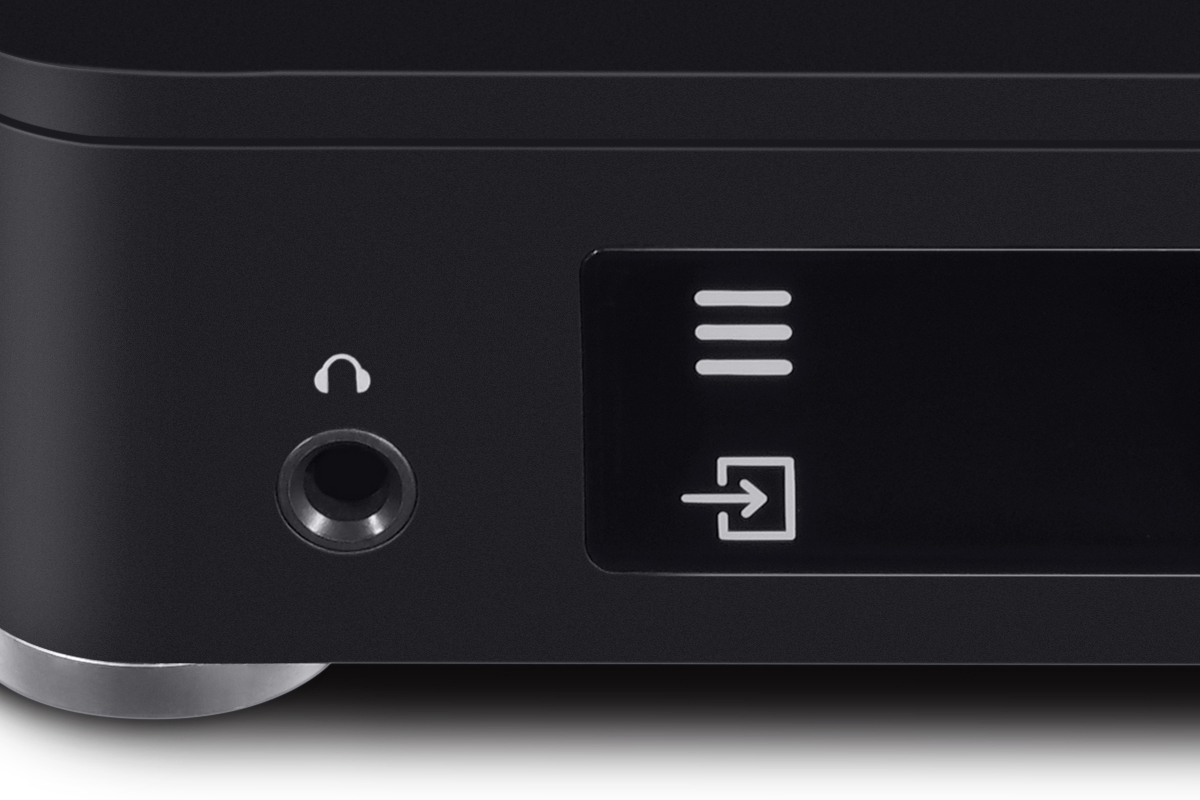
For headphone listening, I connected my HP Spectre x360 notebook PC to the Hub’s USB port and cued up “Baalbeck,” from Ahmad Jamal’s 2017 album Marseille (24/96 FLAC, Jazz Village/ProStudioMasters), in Audirvana. The LX Connect/Edition X V2 combo delivered Jamal’s big, bold piano chords effortlessly. Herlin Riley’s snare rolls and Manolo Badrena’s percussion had fantastic snap and impact—almost explosive, but never harsh or edgy. Throughout the track, there was no sign of compression or distress.
I compared the LX Connect’s headphone amp with my iFi Audio Micro iDSD Black Label DAC–headphone amplifier (discontinued; replaced by the Micro iDSD Signature, $749). The iDSD BL sounded a little weightier, but also more opaque. Through the Mission, the upper octaves of Jamal’s piano had a little more sparkle, and the lower octaves had just as much heft. James Cannack’s double bass had better texture through the Mission—it was woolier and thuddier through the iFi. Riley’s rat-a-tat snare rolls had more snap through the LX Connect Hub. This track sounded great through the iDSD BL, but even better through the LX Connect.
Conclusion
In the Setup section, I noted a couple of rough edges: the limitations in DSD support, and the Hub’s inability to connect via HDMI ARC to my Samsung Frame TV.
But these problems will affect only a small number of users. DSD playback is only an issue for listeners with DSD albums in their music libraries. And except for a few outliers like my 2017 Samsung Frame TV, HDMI ARC should work fine with most displays, as it did with my Vizio HDTV.
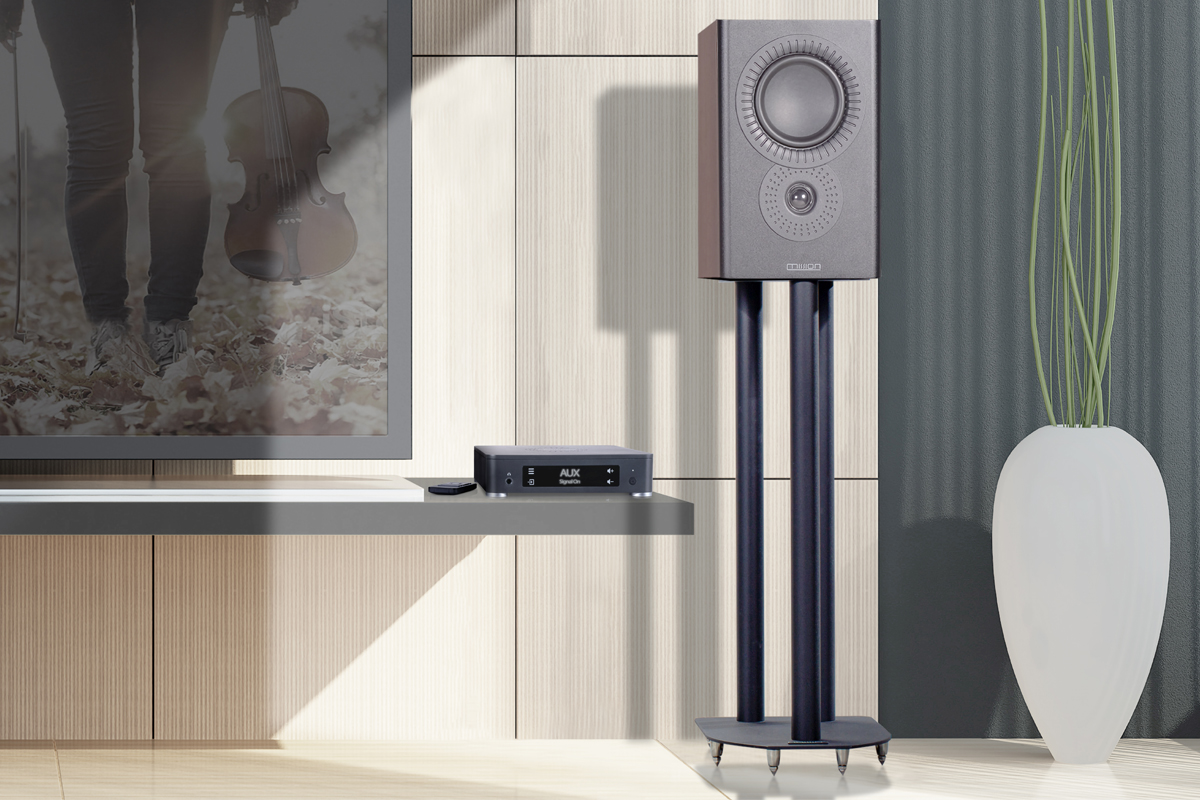
I also commented on some congestion and hardness during loud passages. But let’s be real about this: we’re talking about a pair of compact standmount speakers here. The fact is that I enjoyed almost every moment I spent listening to the Mission LX Connect. The sound was consistently lively and engaging. Imaging and soundstaging were excellent, and instrumental and vocal timbres were commendably accurate.
Bottom line: Mission’s LX Connect is a very appealing package. If you’re looking for a versatile sound system for a secondary room or an affordable low-footprint system for a primary room, you should absolutely check it out.
. . . Gordon Brockhouse
Associated Equipment
- Active loudspeakers: Q Acoustics Q Active 200.
- Headphones: HiFiMan Edition-X V2.
- Sources: iFi Audio Zen Stream, Apple Mac Mini running Roon Core 1.8, HP Spectre x360 convertible notebook PC running Audirvana 3.5.51.
- DAC–headphone amplifier: iFi Audio Micro iDSD Black Label.
- Speaker stands: IsoAcoustics ISO-155 (desktop), Monoprice Monolith 28″ (floor).
- Displays: Vizio D50-D1, Samsung UN55LS003 “The Frame.”
Mission LX Connect Active Loudspeakers and Wireless Hub.
Price: $1699.99.
Warranty: Three years, parts and labor.
Mission
IAG House, 13–14 Glebe Road
Huntington PE29 7DL
United Kingdom
Phone: + 44 1480 452561
Website: www.mission.co.uk
US distributor:
American Audio & Video
4325 Executive Drive, Suite 300
Southaven, MS 38672
United States
Phone: (856) 403-7571





